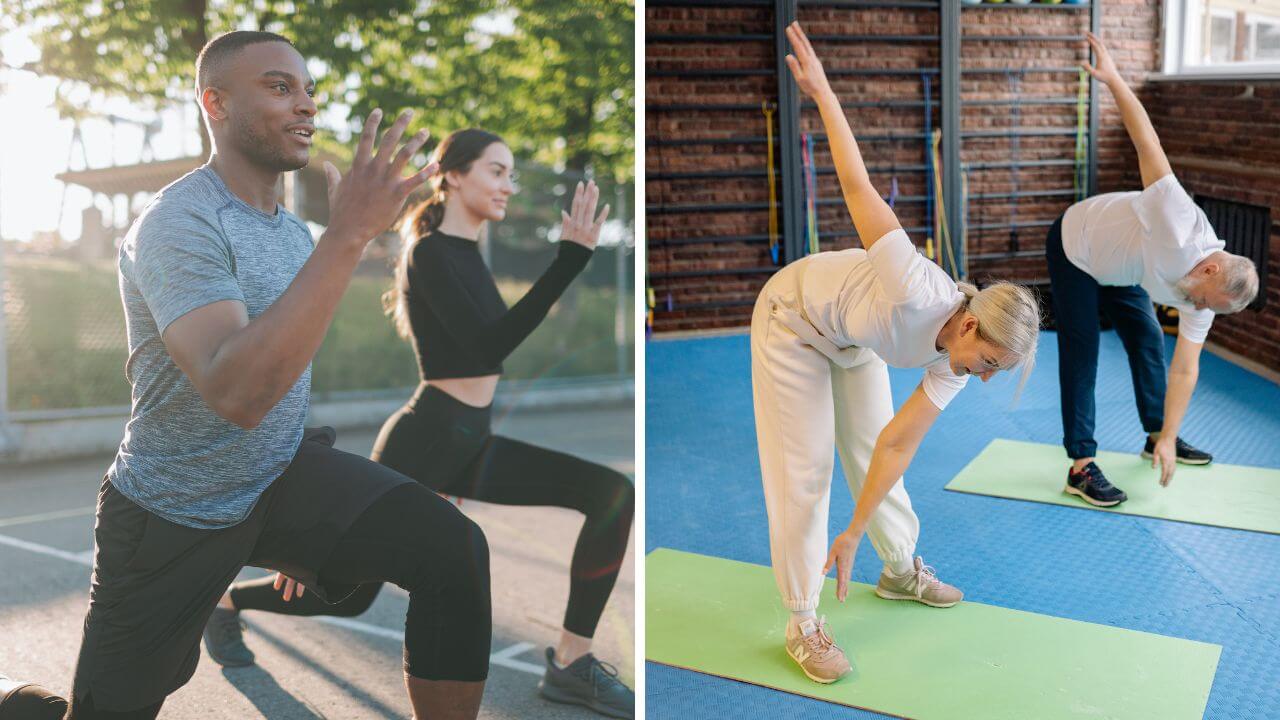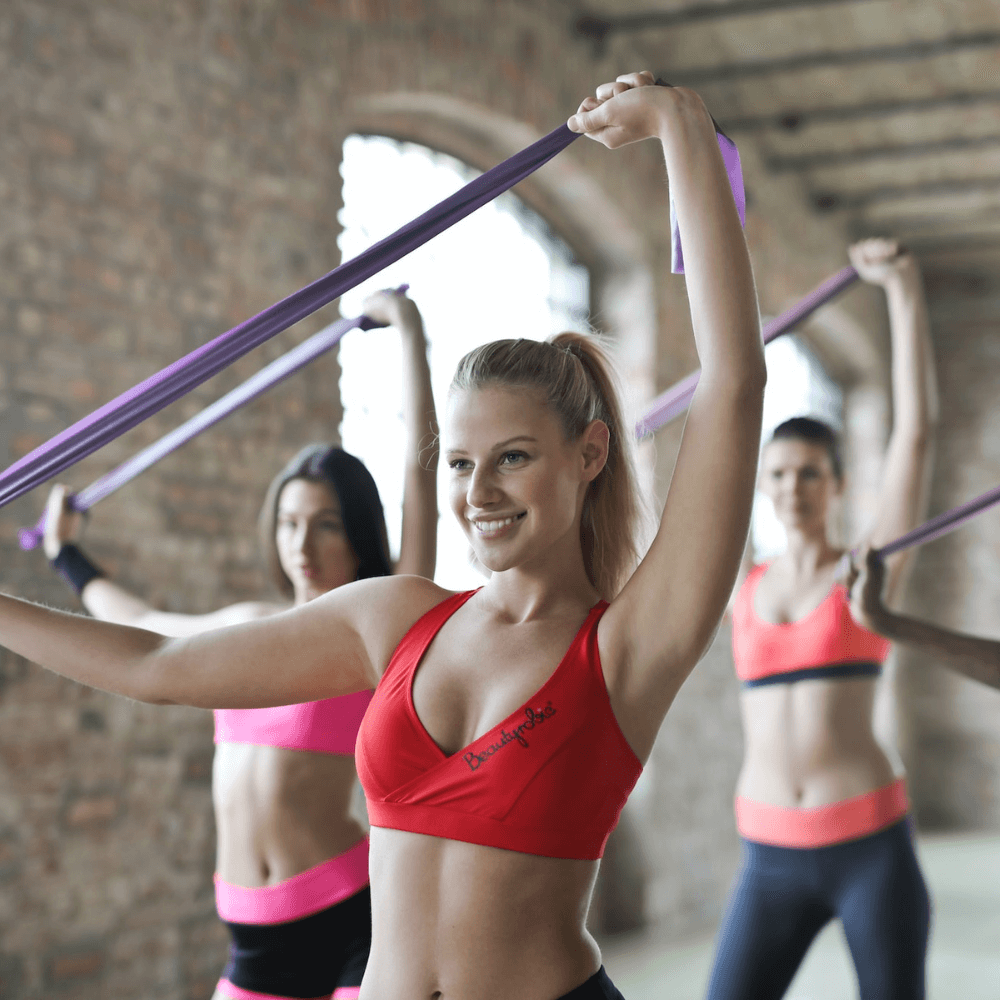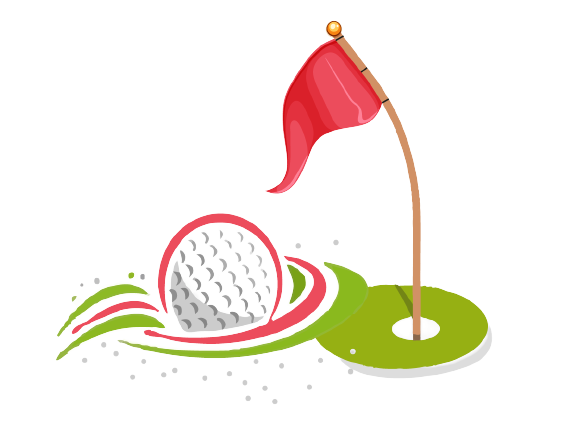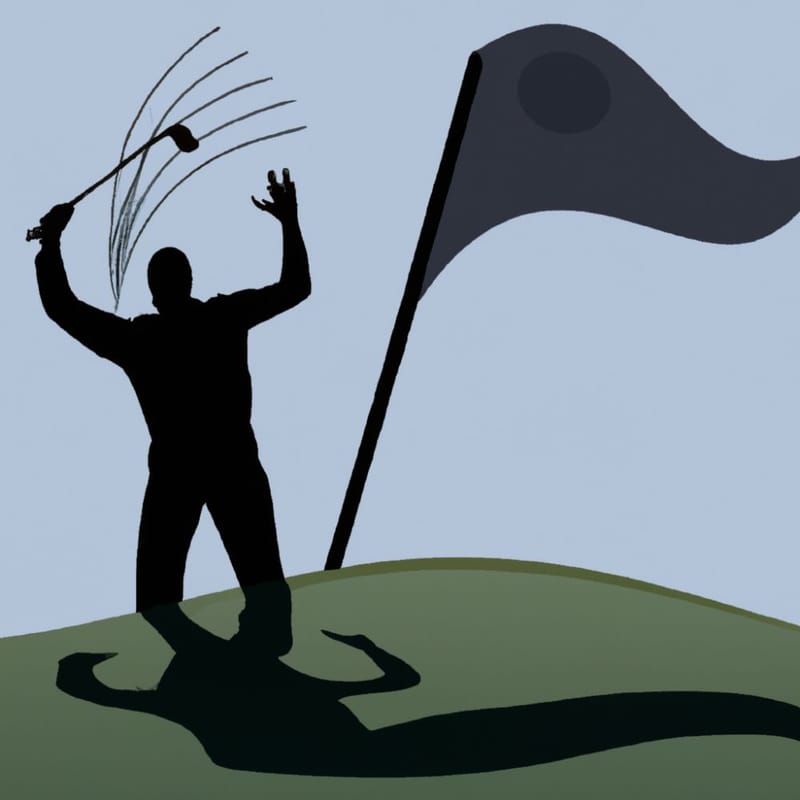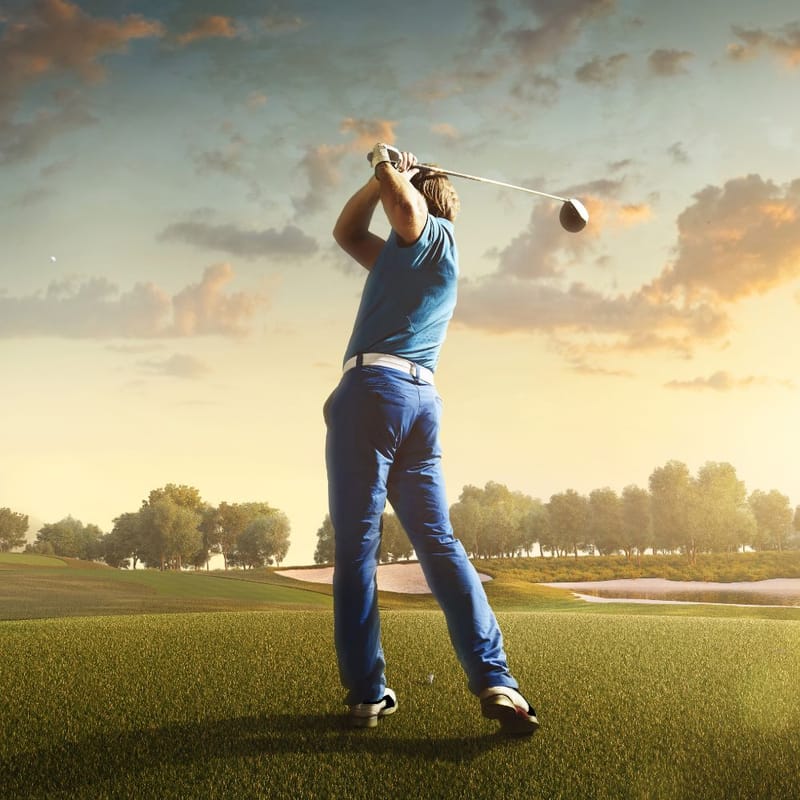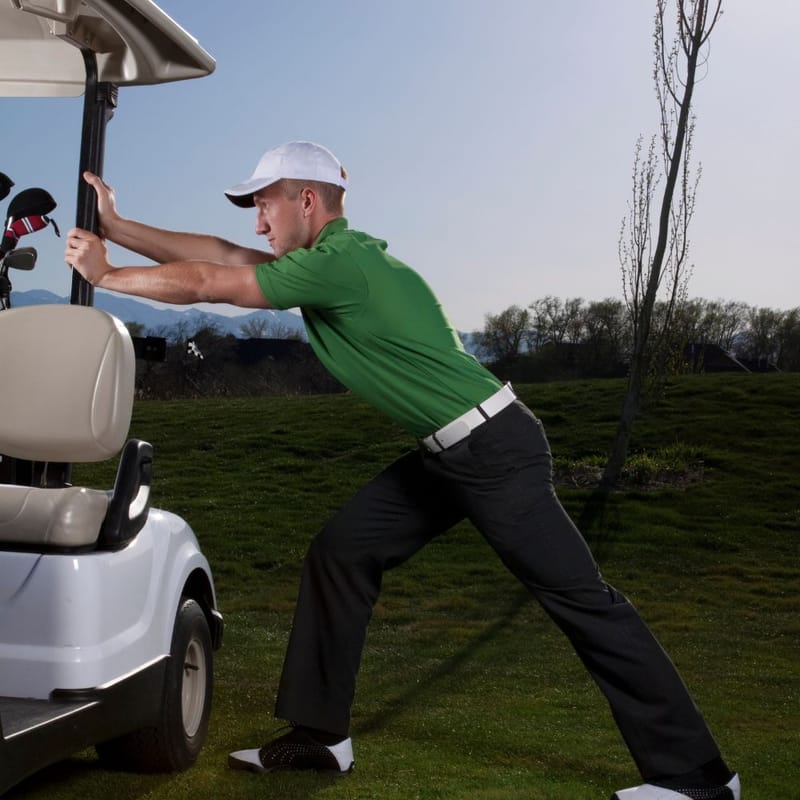Content Summary
Many people have the wrong impression of golf and believe that it is just a relaxing pastime, but let me tell you, it's pretty physically challenging.
Golf requires you to have a solid base of strength, flexibility, and endurance to perform your best. In this article, we're gonna talk about what muscles does golf work and why it's such a great form of exercise.
What Muscles Does Golf Work?
Does golf build muscle? Yes, golf involves a full-body workout that engages a variety of muscles. While many people believe that golf is all about the arms, it requires a lot of core strength and lower body stability as well.
Here are some of the main muscles that golf works out:
Core Muscles
When you're swinging a golf club, you might think that it's all about the arms and hands. But in reality, your core muscles play a crucial role in the process. These muscles include your abdominals, obliques, and lower back muscles. Together, they all work to provide stability and power to your swing.
As you swing the club, you need to maintain good posture and transfer energy from your lower body to your upper body. Your core muscles help with this transfer of energy, allowing you to generate more power so you can hit the ball further.
But that's not all. Strong core muscles can also help prevent injuries and improve your balance. A strong core will keep your body stable during the swing, reducing the risk of strains or pulls. And when you're walking on the course, a strong core will help you stay balanced on uneven terrain.
So if you want to improve your golf game, remember not to neglect your core muscles. Incorporate exercises like planks, crunches, and back extensions into your workout routine to build up your core strength. Trust me, you'll see a big difference in your swing and overall game.
Arm Muscles
While the arms are not the only muscles used in the golf swing, they are certainly important.
The biceps and triceps are some of the golf muscles used that provide the strength for gripping the club and controlling its movement throughout the swing. These muscles work together to create a solid grip, allowing you to maintain control of the club and hit the ball accurately.
Golf muscles for power are the arm muscles which are important for generating clubhead speed, which is essential for hitting the ball further down the fairway. By building up the strength in your biceps and triceps, you can generate more force and hit the ball with more power.
In addition to the biceps and triceps, the forearms are also important for providing support during the swing. Developing your forearm muscles can help improve grip strength, which is important for maintaining control of the club throughout the swing.
To build up your arm muscles for golf, you can incorporate exercises like bicep curls, tricep extensions, and wrist curls into your workout routine.
It's also important to stretch your arm muscles before and after your round of golf to prevent injuries and improve flexibility. By focusing on building up your arm muscles, you can improve your golf game and hit the ball further down the fairway.
Leg Muscles
When you're playing golf, it's easy to focus on your upper body and forget about your legs. But the truth is, your legs play a critical role in providing stability and power during the golf swing.
The quadriceps, hamstrings, glutes, and calves all work together to maintain balance and generate force during the swing. Your quadriceps, located in the front of your thigh, help with the downward movement of the club.
Your hamstrings and glutes, located in the back of your thigh and buttocks, provide power on the upswing. And your calves help with balance and stability throughout the entire swing.
When your leg muscles are strong, you'll be able to maintain your balance during the swing, which is essential for hitting the ball accurately.
You'll also be able to generate more force, allowing you to hit long drives and iron shots. And if you're playing 18 holes of golf, strong leg muscles will help you power through without feeling fatigued.
To build up your leg muscles for golf, you can incorporate exercises like squats, lunges, and calf raises into your workout routine. You can also try walking or jogging on hills to help build endurance and strengthen your leg muscles.
And don't forget to stretch before and after your round of golf to prevent injuries and improve flexibility. With strong leg muscles, you'll be able to take your golf game to the next level.
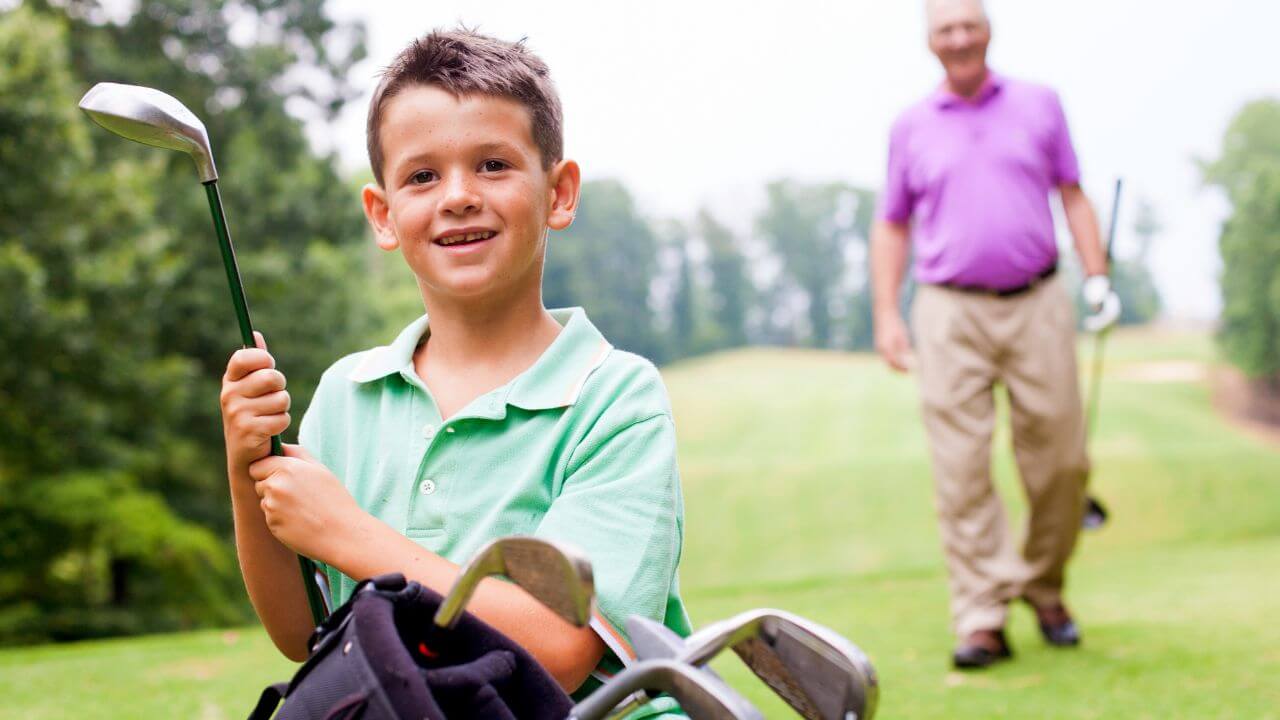
Back Muscles
When it comes to a good golf swing, your back muscles play a critical role. The muscles in your back, including the lats, traps, and rhomboids, help provide stability and power during the backswing and follow-through.
Your lats, or latissimus dorsi muscles, are located on the sides of your back and help with the rotational movement of the swing. Your traps, or trapezius muscles, are located at the top of your back and help with shoulder movement and stability.
Your rhomboids, located in the upper back, help pull your shoulder blades together, improving posture and preventing injuries.
When your back muscles are strong, you'll be able to maintain good posture throughout the swing, which is essential for hitting the ball accurately. Strong back muscles also help prevent injuries, as they provide stability and support to the spine.
To build up your back muscles for golf, you can incorporate exercises like rows, pull-ups, and lat pulldowns into your workout routine.
You can also try incorporating resistance bands or medicine balls to improve your rotational strength. And don't forget to stretch your back muscles before and after your round of golf to prevent injuries and improve flexibility.
By working on your back muscles, you'll be able to generate more power during your swing, maintain good posture, and prevent injuries. So don't neglect this important muscle group if you want to improve your golf game.
Shoulder Muscles
Your shoulder muscles are essential for a successful golf swing. The deltoids and rotator cuff muscles are the main muscles responsible for generating clubhead speed and controlling the movement of the club during the swing.
The deltoids, located on the top of your shoulders, help with the backswing and follow-through of the club. Your rotator cuff muscles, located in your shoulder joint, help with the rotation and stability of your shoulder during the swing.
When you create strong shoulder adductors, you'll be able to generate more clubhead speed and hit longer and straighter shots.
Strong shoulder muscles also help prevent injuries, as they provide stability and support to the shoulder joint. Strong shoulders can improve your range of motion, allowing you to move your arms more freely during the swing.
To build up your shoulder muscles for golf, you can incorporate exercises like shoulder presses, lateral raises, and rotator cuff exercises into your workout routine.
You can also try incorporating resistance bands or weights to increase resistance and challenge your muscles. And, as with all of these muscle groups don't forget to stretch your shoulder muscles before and after your round of golf to prevent injuries and improve flexibility.
Your shoulder muscles are another way to generate more clubhead speed, improve your range of motion, and prevent injuries. So if you want to take your golf game to the next level, don't forget to give your shoulders some attention!
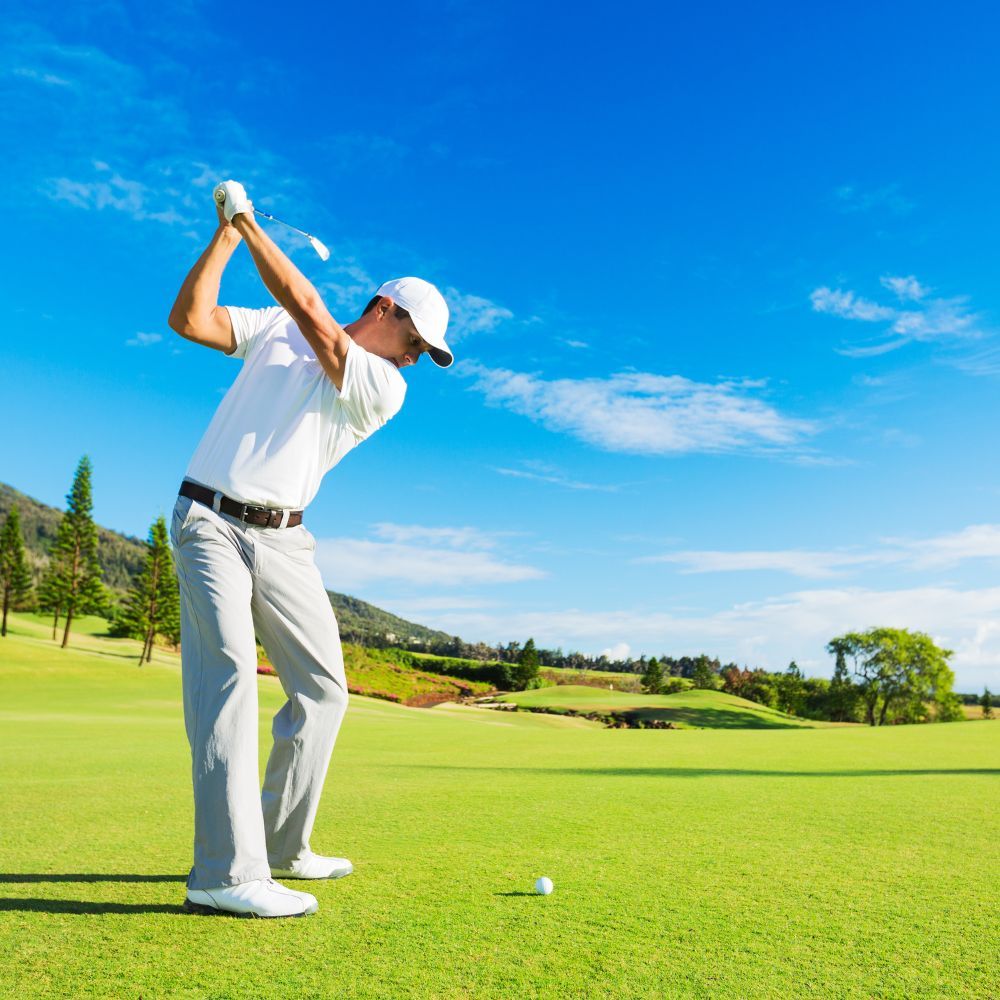
How Golf Can Be a Great Form of Exercise
While many people view golf as a leisure activity as discussed, it can be a great form of exercise.
Here are some of the ways that golf can benefit your health:
Cardiovascular Health
Walking 18 holes of golf can burn up to 1,500 calories, which is equivalent to a 45-minute jog. This level of physical activity can help improve cardiovascular health and reduce the risk of heart disease.
Strength Training
Strength training is an essential part of golf fitness. By building up your strength, you can generate more power in your swing, maintain good posture throughout the swing, and prevent injuries.
Strength training exercises for golf should focus on the core, arms, legs, back, shoulders, and chest muscles. These muscles are all involved in the golf swing and require strength to perform at their best.
Incorporating exercises like squats, lunges, and calf raises can help build strength in your legs. Exercises like rows, pull-ups, and lat pulldowns can help build strength in your back muscles. Exercises like shoulder presses, lateral raises, and rotator cuff exercises can help build strength in your shoulder muscles.
In addition to these exercises, incorporating exercises that target the pectoralis major or chest muscles, such as bench presses or push-ups, can help improve upper body strength and generate more power in your swing.
Remember, strength training is an important part of golf fitness, but it's not the only aspect. Incorporating stretching, cardio, and good nutrition into your routine can help you perform at your best on the golf course.
Flexibility
Flexibility plays a crucial role in the golf swing. To perform a proper golf swing, you need to be able to rotate your hips and shoulders while maintaining good posture and balance. This requires good flexibility in the hips, shoulders, and back.
If you lack flexibility, your swing may be restricted, which can result in a loss of power and accuracy. You may also be more prone to injuries, as restricted movement can cause strain on your muscles and joints.
By improving your flexibility, you can increase your range of motion and generate more power and accuracy in your swing. Flexibility exercises can also help prevent injuries by reducing the risk of strains and pulls.
Mental Health
Golf is often played in a peaceful, natural setting, which can help reduce stress and improve mental health. Additionally, the social aspect of golf can help improve social connections and reduce feelings of isolation.
FAQ's - What Muscles Does Golf Work
Is golf a good form of exercise for weight loss?
Golf can certainly be a good form of exercise for weight loss, as it can burn a significant amount of calories and works out the upper and lower body.
However, it is important to note that the amount of calories burned will depend on factors such as the length of the course and whether or not you walk or use a cart.
Do I need to be in good shape to play golf?
While golf can be physically demanding, it is also a sport that can be enjoyed by people of all fitness levels.
That being said, having good strength, flexibility, and endurance can certainly help improve your golf game and prevent injuries that come from the force created with every swing.
Can golf improve my overall fitness?
Yes, golf can be a great form of exercise that can improve your overall fitness. As we discussed earlier, golf involves a full-body workout that engages a variety of muscles.
Additionally, walking the course can help improve cardiovascular health and burn calories.
What are some tips for improving my golf fitness?
Here are some tips for improving your golf fitness:
- Incorporate strength training exercises that target the core, arms, legs, back, and shoulders.
- Stretch before and after your round of golf to improve flexibility and prevent injuries.
- Walk the course instead of using a golf cart to improve cardiovascular health.
- Practice your swing regularly to improve technique and generate clubhead speed.
- Stay hydrated and fuel your body with healthy foods to improve endurance.
Conclusion
Golf is a sport that can provide a great workout for the entire body. Engaging your golf muscles which include the core, arms, legs, back, and shoulders, helps improve strength, flexibility, and endurance and build a powerful golf swing. It's why you find professional golfers working out in the gym regularly.
Additionally, walking the course can help improve cardiovascular health and burn calories. Whether you are a seasoned golfer or just starting, golf can be a great form of exercise that can benefit your overall health and well-being.
Thank you for visiting, and we hope to see you back soon!

